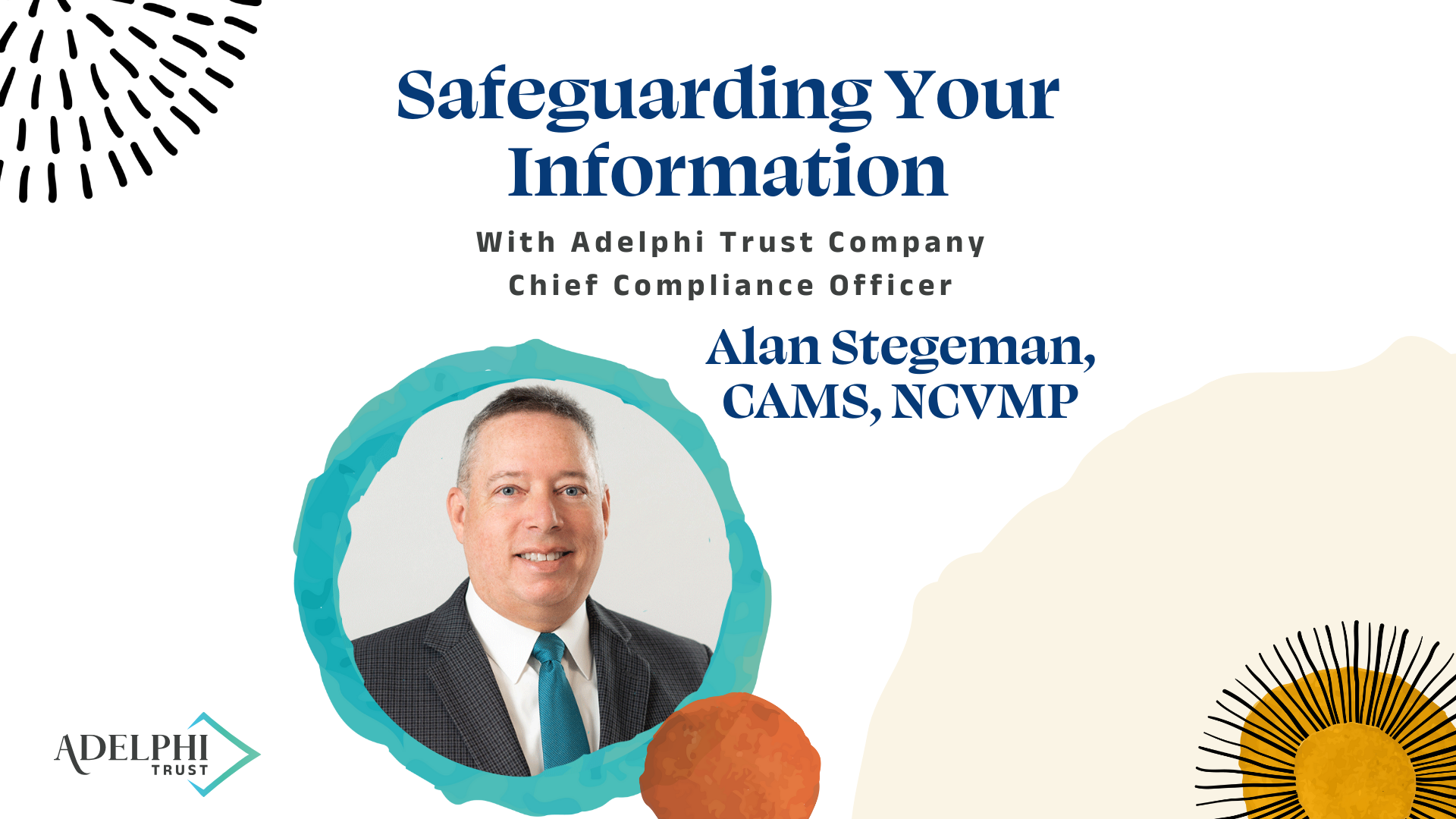By Alan Stegeman, CAMS, NCVMP, Adelphi Trust Company Chief Compliance Officer
Cybercriminals are constantly evolving their tactics to steal your personal and financial information. One of the most common and dangerous methods they use is email spoofing and phishing. These emails arrive in your inbox like any other incoming message and look legitimate, but in the three minutes it takes to read and respond to them or click the link provided, your financial security and peace of mind become vulnerable.
As a Certified Anti-Money Laundering Specialist (CAMS) and Nstitute Certified Vendor Management Professional (NCVMP), I am specially trained in identifying and managing risk and preventing financial crimes, such as email scams. With more than 22 years of experience in trust administration, risk management, and compliance under my belt, you can rest assured that your privacy and safety are our top priority at Adelphi Trust Company.
We hope the knowledge and tools below can empower you to stay safe. Together, we can build a strong defense against increasingly sophisticated and malicious email attacks.
What is Email Spoofing?
Email spoofing occurs when a scammer forges an email’s “From” address to make it look like it’s coming from a trusted source, such as a bank, government agency, or known contact. Scammers are experts at weaponizing trust, and by impersonating the very institutions and people you rely on, they aim to trick you into believing the email is legitimate.
These spoofed emails often look convincing, using logos, language, and formatting that mimic real organizations.
What is Phishing?
Phishing is a broader type of cyberattack where scammers send emails or messages that appear to be from trustworthy sources. It can include email spoofing, but may utilize other means as well. These messages often:
- Urge you to click on malicious links
- Ask you to verify personal or financial information
- Contain attachments that install malware
- Use scare tactics (e.g., “Your account has been suspended!” or “You need to change your password immediately.)
Once you engage with a phishing email, your data, identity, and finances may be at risk.
How to Protect Yourself
Adelphi Trust is committed to the safety and security of all our clients and their personal data.
However, scams can come from anywhere, at any time, and may look genuine in an effort to deceive you. As your trusted financial partner, we urge you to follow these critical safety steps to protect yourself and your loved ones:
1. Think Before You Click
Never click on links or download attachments from unfamiliar or suspicious emails.
2. Verify the Sender
Even if the email looks official, double-check the sender’s address. Spoofed emails may have small variations (e.g., support@yourbank-secure.com instead of support@yourbank.com).
3. Look for Red Flags
Be wary of:
- Urgent language demanding immediate action
- Poor spelling or grammar
- Unfamiliar greetings or inconsistent formatting
4. Type URLs Directly
Instead of clicking links in emails, manually type the website address into your browser.
5. Keep Software Updated
Ensure your devices, antivirus, and browser software are up to date to defend against known threats.
6. To Recap
✅ Always check the sender’s email address, not just their name.
✅ When in doubt, don’t click links or download attachments.
✅ Look for small differences; fake domains often use extra words, numbers, or misspellings.
✅ Contact us directly via phone or our official website if something feels off.
✅ Our official domain is: @adelphitrust.com
Adelphi Trust will never ask for a password or full account number via regular email. We use secure communication channels and email encrypted technologies to protect your information.
If you ever receive a message that looks to be from Adelphi but you’re unsure about its credibility, don’t hesitate to contact Adelphi Trust to verify its authenticity. It’s always better to verify than to fall victim to a scam.



